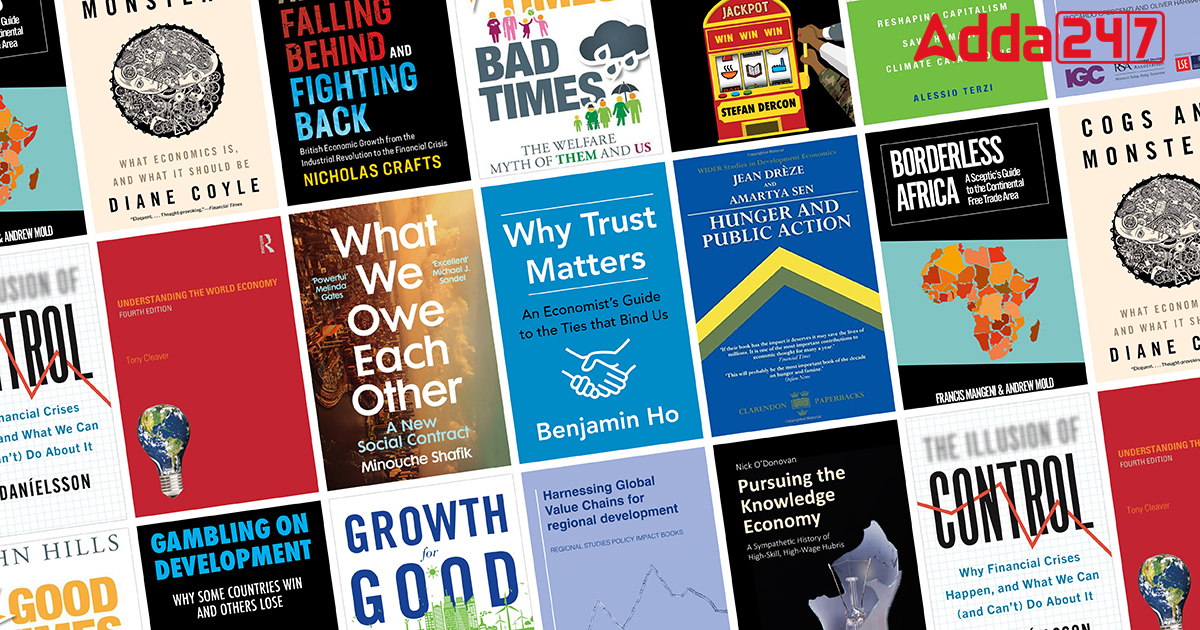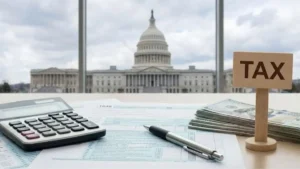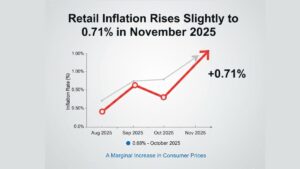Understanding India’s budget and economy is crucial for policymakers, economists, and anyone interested in the nation’s financial landscape. Below is a curated list of important books that provide valuable insights into various aspects of India’s budgetary and economic policies.
Reading List on India’s Budget and Economy
1. “India’s Economic Policy: Preparing for the Future” by Arvind Panagariya
Context: Comprehensive analysis of India’s economic policies, addressing challenges and suggesting future strategies.
2. “Indian Economy: Performance and Policies” by Uma Kapila
Context: A detailed examination of the Indian economy’s performance and the impact of various policies.
3. “Budget 2023-24: Unraveling India’s Fiscal Priorities” by Economic Times
Context: In-depth coverage and analysis of the annual budget, unraveling fiscal priorities for the upcoming year.
4. “The Indian Fiscal System: A Comprehensive Guide” by M. L. Mathur
Context: A guide delving into the intricacies of India’s fiscal system, covering taxation, expenditure, and fiscal reforms.
5. “India’s Economic Reforms and Development: Essays for Manmohan Singh” edited by Isher Judge Ahluwalia
Context: Essays exploring the economic reforms in India, with a focus on the contributions of Dr. Manmohan Singh.
6. “Economic Survey of India” by Ministry of Finance, Government of India
Context: An official publication providing an in-depth analysis of the economic developments and policy initiatives in India.
7. “The Budgetary Process in India” by Bimal Jalan
Context: Examining the intricacies of the budgetary process in India, offering insights into decision-making and resource allocation.
8. “India’s National Budget: A Blueprint for Growth” by C. Rangarajan
Context: Analyzing the national budget as a blueprint for economic growth, with a focus on key policy measures.
9. “Fiscal Policy in India: Trends and Trajectory” by Montek Singh Ahluwalia
Context: A critical assessment of India’s fiscal policy trends, exploring their impact on economic trajectory.
10. “Indian Economy: Problems of Development and Planning” by D. Mishra
Context: Addressing development challenges in the Indian economy, with a focus on planning and policy issues.
11. “Budget and Economic Survey: Decoding India’s Financial Landscape” by Rajiv Mehrishi
Context: Decoding India’s financial landscape through an exploration of budgetary aspects and economic surveys.
12. “India’s Economic Development: Strategies for the New Millennium” by S. P. Gupta
Context: Strategies and approaches for economic development in the new millennium, considering India’s unique challenges.
13. “Public Finance in India” by R. K. Lekhi
Context: A comprehensive examination of public finance in India, covering taxation, public expenditure, and fiscal policies.
14. “Economic Policies and Performance in India” by Deepak Nayyar
Context: Analyzing economic policies and their impact on India’s overall economic performance.
15. “India’s Economic Challenges” by Bibek Debroy
Context: Exploring the various economic challenges faced by India and proposing potential solutions.
16. “Goods and Services Tax: Journey of One Nation, One Tax” by Arun Jaitley
Context: A detailed account of the journey and implementation of the Goods and Services Tax (GST) in India.
17. “Economic Reforms in India: From First to the Second Generation and Beyond” by Jagdish Bhagwati
Context: Tracing the evolution of economic reforms in India, examining both the first and second-generation reforms.
18. “Budgetary Politics in India” by Sudipta Adhikari
Context: Exploring the political dimensions of budgetary processes in India, shedding light on the intersection of politics and economics.
19. “India’s Fiscal Federalism” by Y. V. Reddy and Sajal Lahiri
Context: Examining the dynamics of fiscal federalism in India and its implications for economic governance.
20. “Economic Planning in India: Issues and Challenges” by K. N. Raj
Context: Analyzing the issues and challenges associated with economic planning in India, offering insights into the planning process.
21. “Financial Inclusion in India: Policies and Practices” by R. K. Uppal
Context: Examining the policies and practices promoting financial inclusion in India and their impact on the economy.
22. “Indian Financial System: Structure and Functions” by H. R. Machiraju
Context: Providing an overview of the structure and functions of the Indian financial system, crucial for understanding economic dynamics.
23. “Economic Development in India: Challenges and Prospects” by Amartya Sen and Jean Drèze
Context: Addressing the challenges and prospects of economic development in India through the lens of renowned economists.
24. “Monetary Policy in India: A Modern Macroeconomic Perspective” by Urjit R. Patel
Context: A modern perspective on monetary policy in India, exploring its role in shaping the macroeconomic landscape.
25. “India’s Trade Policy: A Comprehensive Analysis” by Biswajit Dhar
Context: A comprehensive analysis of India’s trade policies, examining their impact on the economy and global interactions.
Important Questions Related to Exams
1. Question: What is the primary purpose of fiscal policy?
-
- a) Monetary stability
- b) Price control
- c) Economic growth and stability
- d) Social welfare
2. Question: Which economic indicator measures the average change in prices of a basket of consumer goods and services over time?
-
- a) GDP
- b) Inflation rate
- c) Unemployment rate
- d) Exchange rate
3. Question: What does the term “GDP per capita” represent?
-
- a) Total national income
- b) Average income per person
- c) Government spending
- d) Gross investment
4. Question: In the context of international trade, what does the term “trade deficit” indicate?
-
- a) Exports exceeding imports
- b) A balanced trade situation
- c) Imports exceeding exports
- d) Zero trade activity
5. Question: Which organization is responsible for issuing currency notes in India?
-
- a) Reserve Bank of India (RBI)
- b) State Bank of India (SBI)
- c) Ministry of Finance
- d) Securities and Exchange Board of India (SEBI)
6. Question: What is the main objective of the Goods and Services Tax (GST) in India?
-
- a) Increase tax rates
- b) Simplify the tax structure
- c) Encourage tax evasion
- d) Eliminate indirect taxes
7. Question: What does the term “repo rate” refer to in the context of monetary policy?
-
- a) Interest rate at which banks borrow from the central bank
- b) Interest rate on loans to the public
- c) Rate of inflation
- d) Exchange rate fluctuations
8. Question: Which economic concept measures the percentage increase in the general level of prices for goods and services over a period?
-
- a) Recession
- b) Inflation
- c) Deflation
- d) Stagflation
9. Question: What is the purpose of the World Trade Organization (WTO)?
-
- a) Military alliance
- b) International economic cooperation
- c) Environmental protection
- d) Cultural exchange
10. Question: What is the role of the Reserve Bank of India (RBI) in the Indian economy?
- a) Fiscal policymaking
- b) Regulation of banks and monetary policy
- c) Infrastructure development
- d) Foreign affairs coordination
Kindly share your responses in the comment section!!




 India’s Forex Reserves Rise by $1.68 Bil...
India’s Forex Reserves Rise by $1.68 Bil...
 India’s Net Direct Tax Collections Rise ...
India’s Net Direct Tax Collections Rise ...
 Retail Inflation Rises Slightly to 0.71%...
Retail Inflation Rises Slightly to 0.71%...







